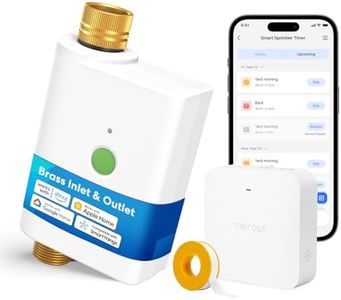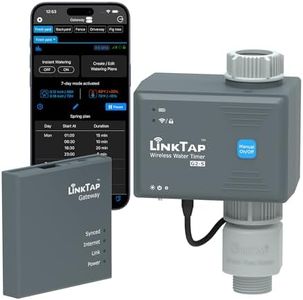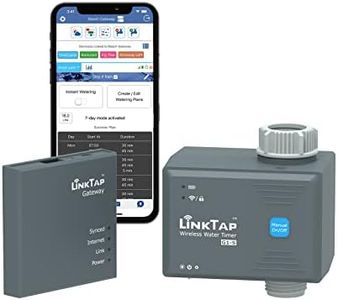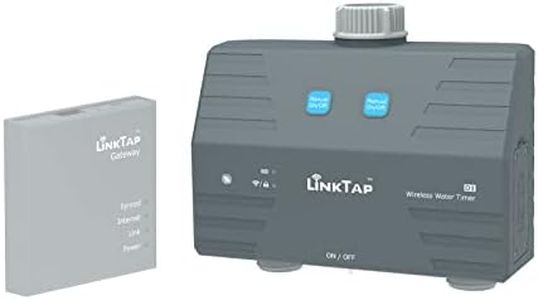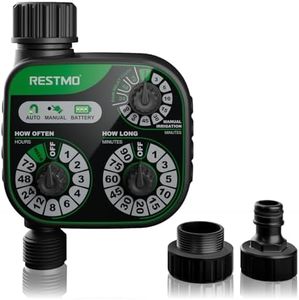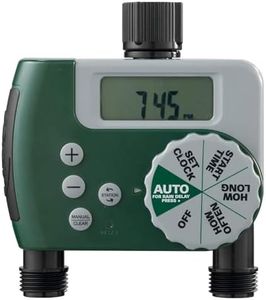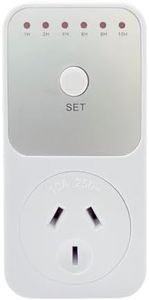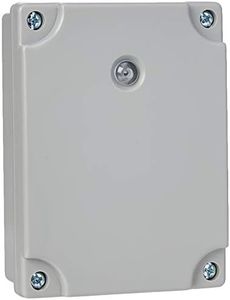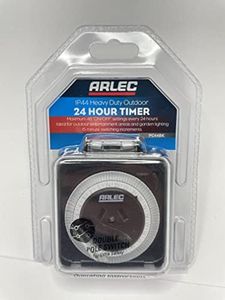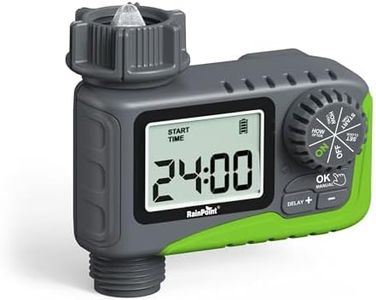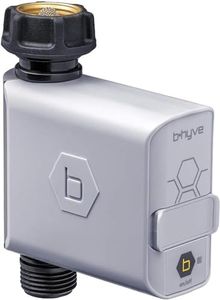We Use CookiesWe use cookies to enhance the security, performance,
functionality and for analytical and promotional activities. By continuing to browse this site you
are agreeing to our privacy policy
10 Best Outdoor Timers
From leading brands and best sellers available on the web.Buying Guide for the Best Outdoor Timers
Outdoor timers are extremely useful tools for automating electrical devices outside your home, like garden lights, holiday decorations, or sprinklers. Picking the right outdoor timer can make your setup safer, more convenient, and more energy-efficient. When choosing one, focus on key features that impact durability, compatibility, and how easily you can program them to match your schedule.Weather Resistance (IP Rating)Weather resistance, typically shown as an IP (Ingress Protection) rating, indicates how well the timer can withstand dust and water. This is crucial for outdoor use because moisture and dirt can quickly damage regular timers. IP ratings like IP44, IP55, or IP65 divide timers into levels: the higher the numbers, the greater the protection. If your timer will be exposed to rain or sprinklers, choose a higher IP rating. If it's mostly sheltered under a roof or awning, a lower rating might suffice. Match the level of exposure in your setup to the timer’s IP rating for long-lasting performance.
Programming Options (Mechanical vs Digital)Programming options refer to how you set the timer to control your devices. Mechanical timers use a simple dial or segment system, while digital timers offer electronic buttons and screens. Mechanical timers are easy to use and great for basic daily routines. Digital timers provide more flexibility, like multiple programs and custom schedules (often for different days), but can be more complex to set up. If you want a ‘set and forget’ option for the same on/off times daily, mechanical might be better. If you need customized schedules or lots of control, digital is the way to go.
Number of OutletsThe number of outlets tells you how many devices you can plug into the timer at once. Some timers offer a single outlet, others multiple. If you just need to control one item, a single outlet is fine. For running several lights or decorations, look for a timer with two or more outlets. Think about all the devices you want to automate so you’re sure to have enough connections, keeping in mind not to overload the timer.
Maximum Load (Amps/Watts)Maximum load is the highest amount of electrical power the timer can safely handle, usually stated in amps (A) or watts (W). This is important because plugging in too many devices or very powerful equipment can cause the timer to fail or even become dangerous. Devices with higher wattage, like heaters or large pumps, need a higher-capacity timer. For string lights or small gadgets, a lower rating is fine. Check the total wattage or amps of your devices and ensure the timer can handle at least that much.
Manual Override SwitchA manual override switch lets you turn the connected devices on or off without waiting for the current program. This is handy if you need light or water unexpectedly. Not every timer has this feature, but it’s useful for flexibility. If you value being able to manually control your equipment at times, look for a timer with this option.
Mounting OptionsThe mounting options describe how and where you can place the timer. Some timers are designed to be staked into the ground, others hung on a wall or simply rest on a surface. Choose the one that fits your intended location—ground stakes are great for garden beds, wall mounts suit areas near power outlets on a shed or house wall.
